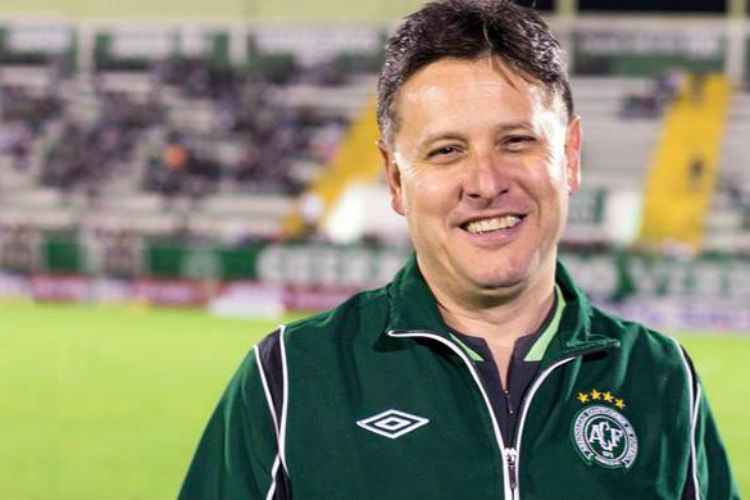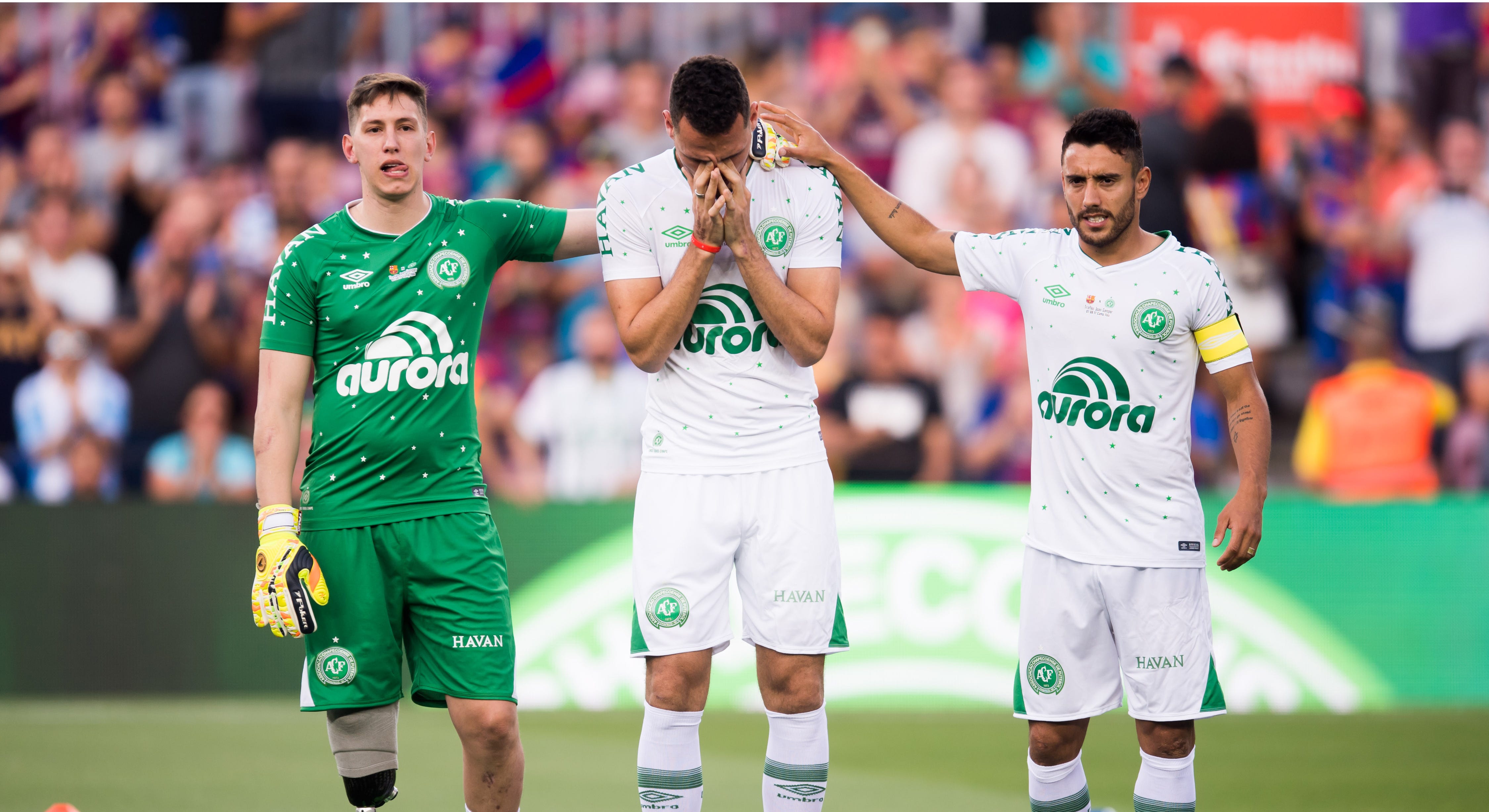Chapecoense’s highest of high and lowest of low

Back in 2015 not many people had heard of the Brazilian football-club called Chapecoense. A club based in Chapeco, a municipality in the state of Santa Catarina in southern Brazil - far from any of the big cities. A place where there was only wilderness a century ago.
In 1973 the football club called Associação Chapecoense de Futebol founded, and four years later the club won its first title: The Santa Catarina State Championship. But the club was unable to build on this success, and ended up meandering in the lower leagues in Brazil, outside of the professional football.
Being an amateur club in Brazil isn’t an easy feat, and the task of moving from the amateur-level and into the league system seemed impossible. Before 2009 there was only three professional leagues in Brazil, and the club struggled to stay alive. But then their luck turned: in 2009 Brazil introduced a fourth level – Serie D.
All or nothing
Chapecoense managed to gain access to this league through their performances in the state championship the previous year, and in their first season they were flying. They made it to a quarter final through the league, and faced the biggest match of the clubs existence thus far in the quarter final: A win would see them gain promotion to Serie C. A loss would see them thrown out of Serie D.
They faced Araguaia, and away from home, after a long travel, they managed to win 2-1. The reverse fixture ended in a 0-1 loss for Chape, who got a man sent off after a minute. But thanks to away goals Chapecoense was ready to play Serie C the following season.
The first two seasons they survived in Serie C, placing 7th and 6th. And brilliant player recruitment helped Chapecoense take the next step in their history. Another key to the clubs future success was their structure. Sandro Pallaoro, the clubs new president, drew his experience from the business-world into the world of football. And one of the things he brought were the mindset of treating the players, family and all connected with the club with the utmost respect. When a player signed for Chape, he knew that he would get paid his wages in full, something that wasn’t a given, and would be the reason why Chape started climbing.

President Sandro Pallaoro, who brought Chapecoense to the top of Brazilian football.
Back-to-back
Because in 2012 the start to the Serie C-season was delayed by multiple months because a different club filed a lawsuit against the league and Brazilian federation. This delay to the season led to clubs not getting any income from ticket sales, the most important revenue stream for a club at that level.
Chapecoense, and many other clubs, were unable to pay players wages. But where other clubs saw four, five, six and even more players breaking their contract, Chapecoense kept all their players due to the mutual respect and trust between players and the board. This gave them continuity and a leg up before their third season in Serie C.
They qualified for the playoffs in where they faced Luverdense. A 3-1 win on aggregate saw Chapecoense qualify for Serie B.
Before this season Chape signed two prominent players that would make their mark in the clubs history. Left back Alan Ruschel, and striker Bruno Rangel, who ended up becoming the all-time top scorer in Chapecoense. And with a solid defensive structure and a striker bagging 31 goals they placed 2nd in Serie B, and were ready to play at the top level in Serie A.
Continental football
In their first season in Seire A one player started to stand out even more for Chapecoense. The goalkeeper Danilo kept clean sheets after incredible saves, and were one of the keys to Chape managing to survive their first season back in Serie A after finishing 15th.

And finishing 15th were also somehow enough to secure a spot in the Copa Sudamericana, the Europa League of South American football, because they were the fourth best team in Serie A who didn’t make it to the quarter finals in the Brazilian Cup.
Then the club managed to sign even more star players, including Hélio Neto, the tall centre back from the Copa Libertadores-champion in 2011, Santos. A signing made a lot thanks to Bruno Rangel, an old friend from Bible-school who talked him into joining Chapecoense.
In their first season in continental competition the Brazilian outfit knocked out Ponte Preta in the second round, before Danilo again became the hero after saving penalties in the shoot out against Libertad. Then Argentinian giants River Plate waited in the Quarter final – where Chapecoense only lost by one goal: 4-3 on aggregate, after a Rangel brace. In the league they finished 14th, and were yet again ready to play in Copa Sudamericana.
And just like that we're in 2016, a year the people of Chapeco will never forget.
A run to remember
In their second season in Copa Sudamericana they had to go through a qualifying stage, where Cuiabá waited, a club from Serie C in Brazil who qualified for continental football after winning Copa Verde the previous year – a cup for lowly ranked teams in the northern Brazil.
Cuiabá won their match at home 1-0, before also taking the lead away from home 1-0 before half time. But in the second half Chapecoense, helped with a flooded pitch, won 3-1 after another brace from Rangel.
In the round of 16 they faced Argentinian side Independiente, where both matches ended goalless. To penalties we go, and Chapecoense missed their first two. But there was no need to worry, because between the sticks they’ve got Danilo, who yet again became the hero – saving four penalties to send Chape to the quarterfinals.
There Chapecoense beat Junior 3-1 on aggregate, before San Lorenzo was next up in the semi-final. Away from home Chapecoense managed a 1-1 draw, and the second leg brought them a hard fought 0-0 draw, after Danilo yet again delivered an impressive save deep into added time, that saw Chape qualify for the final of Copa Sudamericana seven years after they made it into Serie D. And the celebrations in the locker room after the match has become legendary.
When tragedy strikes
In the two legged final Chapecoense was going to face Atlético Nacional from Colombia. A long journey for the Brazilian club, who chartered a flight from the Bolivian company LaMia, who had previously flown the Argentinian national team with players such as Lionel Messi on travel while on international duty.
But this flight turned into a tragedy. Just before arriving at Medellín in Colombia, the plane disappeared from the radar. It was later made known that the plane ran out of fuel, despite international law requiring flights to have enough fuel to reach a destination and circle around in the air for 30 minutes or more. LaMia’s official flight plan shows the projected flying time to Medellín being 4 hours and 22 minutes. The exact same as the fuel levels the plane had.
When air traffic control put LaMia in a circling pattern due to heavy rain, the plane ran out of fuel, with the pilot, and co-owner of the airline, not calling in an emergency until it was too late.
Tragedy struck, and the crash killed 71 people. 19 out of 22 players travelling for the final died, 25 people in the administration and the club’s staff, 20 reporters and journalists and 7 crew members passed away on that tragic November day.
Three players survived: Goalkeeper Jackson Follmann would never play football again, and had to amputate his leg. Centre back Hélio Neto managed to recover enough to play for Chapecoense again, but retired in 2019 due to the pain caused by his injuries from the crash. And Left back Alan Ruschel, who fought his way back despite doctors saying he would be lucky if he managed to walk again, becoming the captain of the club the next couple of years, and is still playing, now for Londrina in Serie B.

Goalkeeper Danilo were reported to have survived the crash, but the reports were false, and he, alongside 70 other people lost their lives barely 8 miles away from the airport in Medllín. He was later awarded the Player of the Year trophy in Brazil for his impressive 2016-season.
Rebuilding and turmoil
The questions now were what will happen next for the club? Will it fold, or will it somehow manage to stay alive? Almost entire squad were killed, the coaching and medical staff had passed away, and 10 out of 14 board members were on the plane and never returned home. The task seemed impossible ahead of the new season, starting two months later.
On January 4th the club had four players. One month later the season kicked off, and they had an entire squad, after help from other teams in Brazil. A sister-club of Chapecoense, Palmeiras, had won Serie A the season of the crash, and more or less told Chape to pick and choose from their players who they wanted to sign to help the club survive.
Chapecoense were also offered immunity from relegation the next three seasons, an offer they declined. Their identity was that they were fighters – if they had nothing to play for, they would lose this.
But despite managing to survive the first season, through fighting for their lives, Chape lost some of its identity still. What was so special about the club were the family identity between the players, the fans, the staff, everyone. It wasn’t like this anymore.
Some of the widows were struggling, emotionally and financially, and felt they didn’t receive the compensation they were owed by the club. A group of the widows filed a lawsuit against the club over salary that were owed, that ended in a settlement, not helping the club financially.
Inner turmoil has ravaged the club. After finishing dead last in the 2021 season of Serie A, with insecure financials, the club had to think differently to survive. It was time to find back to the identity they lost back in 2016.
But who is the man who’s going to be in charge. Who will the club bring back, to find themselves, and bring back the glory to the city of Chapeco?
Sources: When We Were Kings (podcast), Nossa Chape (documentary, 2018).



 Gílson Kleina’s time with Chapecoense has come to an end.
Gílson Kleina’s time with Chapecoense has come to an end. Hélio Neto, to the left, was one of the three surviving players in the crash in 2016. He has since taken on the role as club director of Chapecoense.
Hélio Neto, to the left, was one of the three surviving players in the crash in 2016. He has since taken on the role as club director of Chapecoense.